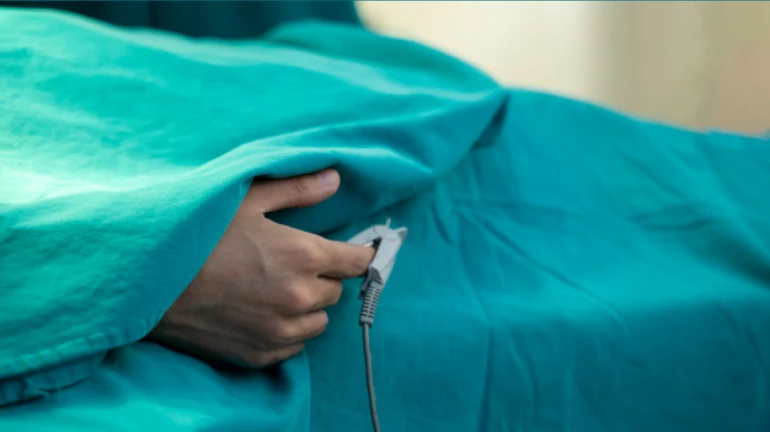
A team headed by Dr Pavan Pai, Consultant Interventional Neurologist, Wockhardt Hospital, Mira Road gave a fresh lease of life to a 65-year-old woman with acute ischemic stroke who received treatment within ‘window period’. A successful direct mechanical thrombectomy procedure was performed on the patient who had a left-sided weakness, difficulty in speaking, and was in a semi-conscious state. Now, the patient has been discharged from the hospital, can walk and speak, and has resumed her daily routine.
Reena Sharma (name changed)*, the 65-year-old resident of Mira Road had a sudden onset of left-sided weakness, speech difficulty and was in a semi-conscious state on February 26. Her family members were alarmed and took her to the general practitioner who suspected a stroke. She was referred to Wockhardt Hospital for further treatment wherein her life was saved by Dr Pavan Pai.
Dr Pavan Pai, Interventional Neurologist, Wockhardt Hospitals, Mira Road said, “On arrival in an emergency, the patient was in a semi-conscious state, couldn’t move her left side of body or speak. Her CT Angio showed complete occlusion of the basilar artery at the back of the brain due to which she had left-sided weakness. Her MRI also indicated acute ischemic stroke. The patient was taking a blood thinner (anticoagulant) for mitral valve replacement (MVR) for 20 years and it was not advisable to administer IV thrombolysis as it would have led to bleeding in the brain. The anticoagulant resistance could have resulted in a blood clot that migrated from the heart and caused occlusion or the blockage of the basilar artery supplying to the back of the brain. She was at a greater risk of having a bigger stroke which could have been life-threatening. Hence, she was advised to undergo direct mechanical Thrombectomy on an urgent basis.”
Dr Pai added, “The patient was taken to the Cath lab. I went through the groin artery with the help of a catheter and then reached the basilar artery at the back of the brain, sucked the clot in the artery and opened the clogged artery. The patient reached the hospital after 50 minutes of the onset of stroke, and the artery was completely opened at 5 hours from the onset and post-procedure the patient became conscious, could speak, and moved all 4 limbs. The window period for doing mechanical Thrombectomy is 6 hours when a stroke occurs due to large artery occlusion in the front part of the brain and 12 hours in the back part of the brain. Direct Mechanical thrombectomy is similar to Primary Angioplasty in Myocardial Infarction (PAMI) for heart attack and is safely performed on patients taking anticoagulants or those in the immediate post-operative state where IV thrombolysis should not be performed. Since the patient reached within the window period, and the clogged artery was opened in time, there was no disability and her life could be saved. She was discharged on March 5, and went back home walking on her feet.”
Be alert of the signs of stroke and get prompt medical treatment. Remember B – Trouble with balance, E – Eye vision loss, F – Facial weakness, A-Arm weakness, S- Speech difficulty, T – Reach a nearby hospital with stroke care facilities in time.”
“My family members were alert, and I was fortunate to seek treatment within the window period after the onset of stroke. I urge everyone to B.E. F.A.S.T. in spotting a stroke,” concluded the patient Reena Sharma (name changed)*.





